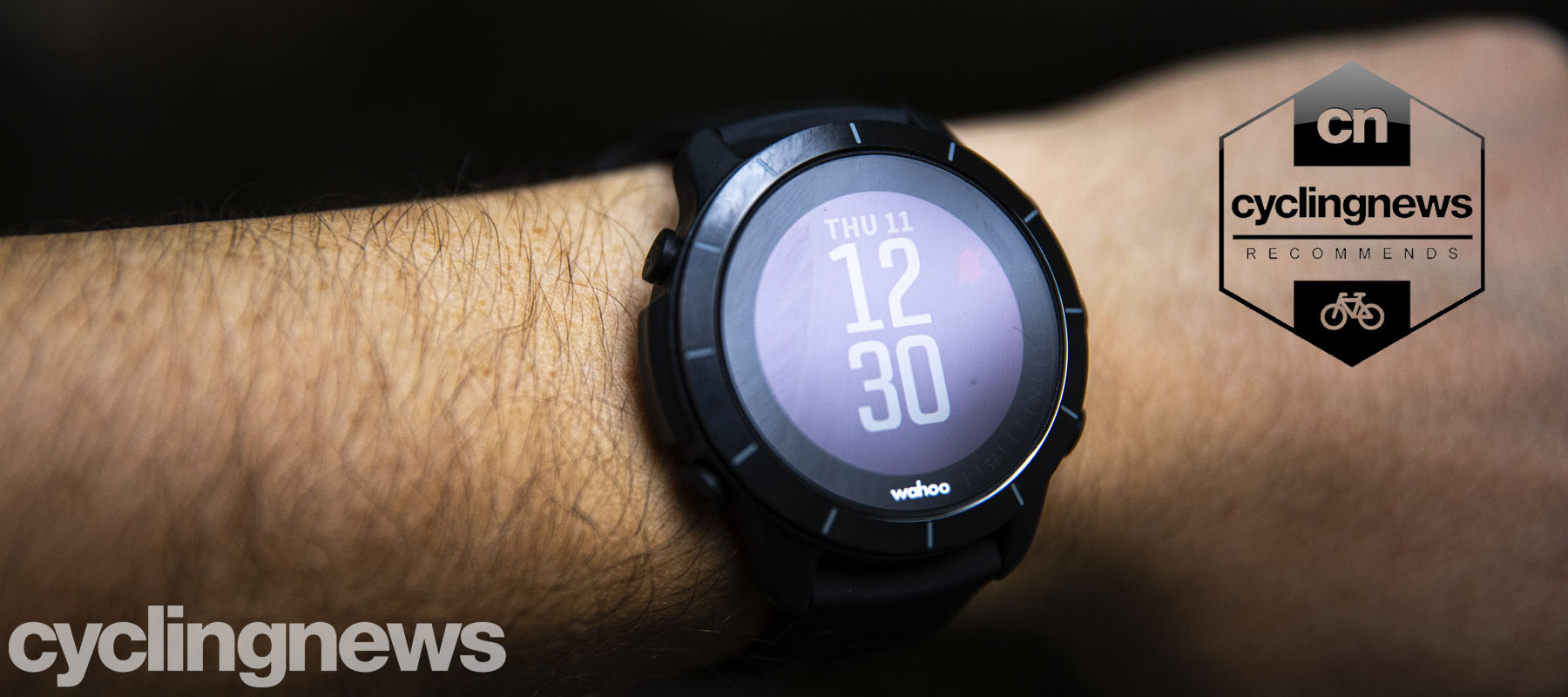Cyclingnews Verdict
Wahoo has distilled the Elemnt Rival into a performance-based smartwatch, keeping features that most riders and triathletes will appreciate, and getting rid of all the extras
Pros
- +
Aesthetics
- +
App integration
- +
Touchless transition
- +
Pain-free pairing
Cons
- -
HR data
- -
No alarm clock
You can trust Cyclingnews
When someone asks me what computer they should buy, nine times out of ten, I will recommend one of the Wahoo Elemnt computers. They aren't quite as feature-rich as the Garmins, nor do they have quite the same navigational capabilities but they simply work. So when the Wahoo Elemnt Rival computer was launched, we were excited to see what the American brand had done with its first smartwatch.
Of all the computers I've used, Wahoo's are easily the most reliable and easy to live with. They painlessly pair to and remember sensors; your rides automatically upload to the device and are pushed onto whatever service you'd like them to go without any prompt. Wahoo is also regularly integrating additional functionality, as happened with the Garmin Varia Radar and Specialized ANGi.
With the launch of its first smartwatch, the Elemnt Rival, Wahoo has brought its head units to your wrist, so let's take a look at how they compare against the best smartwatches for cycling.
- Wahoo Fitness: Comprehensive range overview
Design and aesthetics
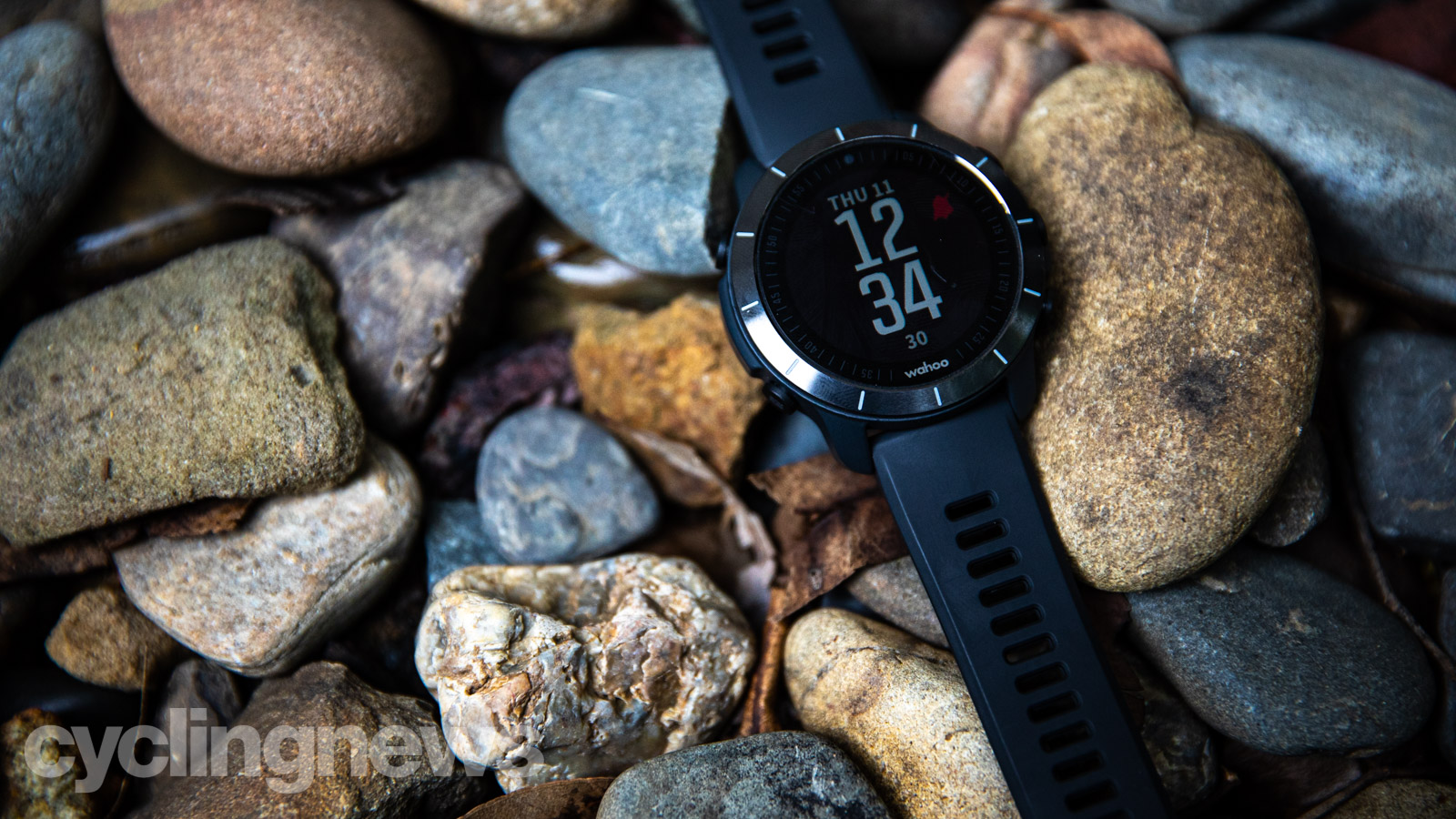
Wahoo's Elemnt Rival takes a similar aesthetic form to the Garmin Fenix and Coros smartwatches - both of which look pretty great to my eyes.
The watch is 46.5 x 46.5 x 15.3 mm in size and the 30.4mm colour screen has a 240x240px resolution. The bezel is made from ceramic, while the rest of the case body is made from a nylon polymer, keeping the watch lightweight — weighing 54g by my scales.
The screen itself is made from Gorilla Glass and does not have any touch functionality. In the age of swipes, pinches and taps, the last thing you want on a cycling smartwatch is a touchscreen. Looking at other watches that do have touch screens such as the Apple Watch - they are entirely useless when wet and have a moderate hit rate with full-finger gloves; buttons on the other hand are not stymied by damp weather, sweaty fingers, or gloves. The strap is made from flexible silicone and can be swapped tool-free. Wahoo opted for a 21mm wide strap, which has become a relatively standard size for smartwatches, so if you don't like the included strap, you can slot in something else, even a non Wahoo strap.
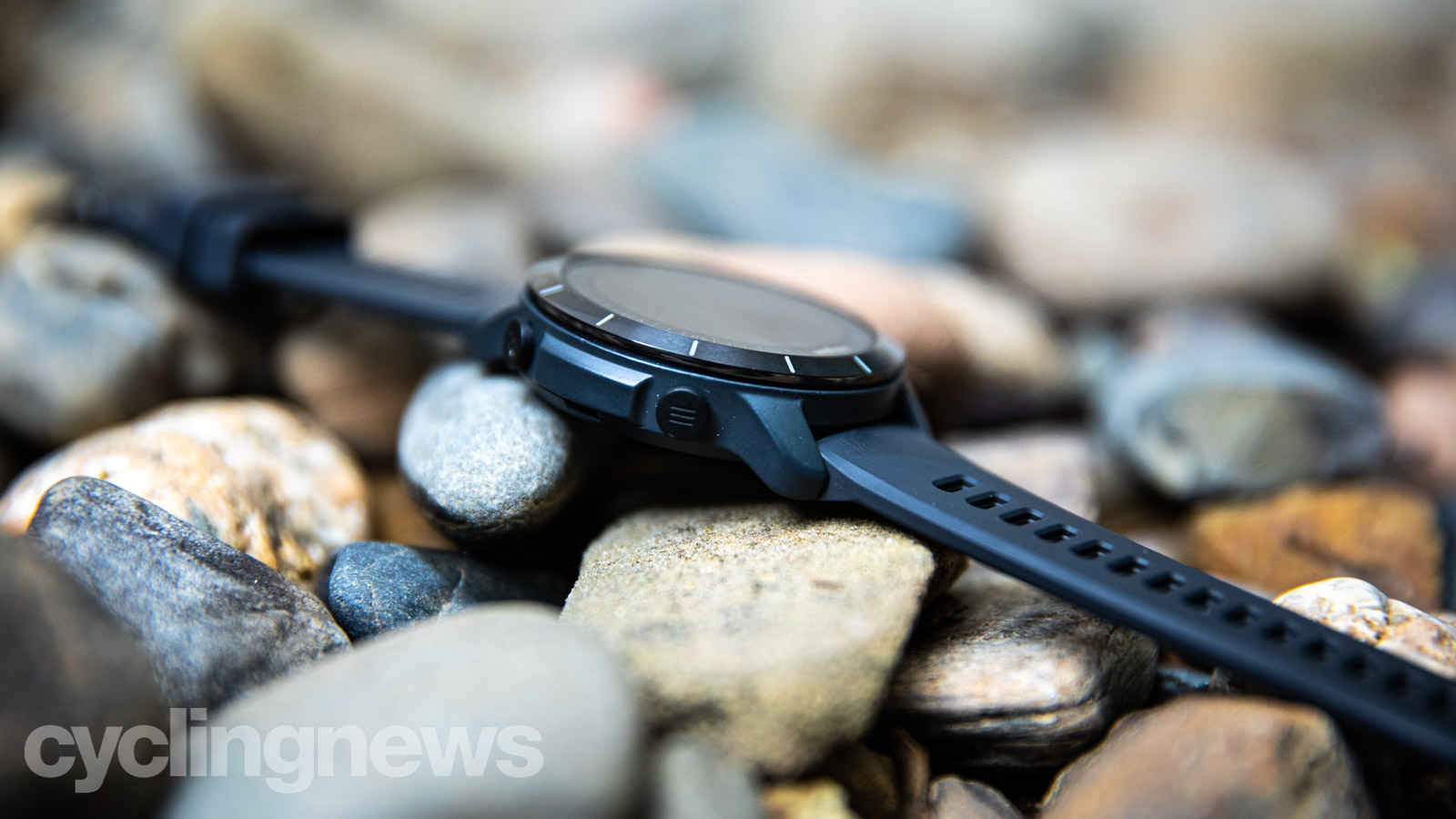
The Rival can take advantage of both the GPS and GLONASS satellite networks and can connect to ANT+, and Bluetooth sensors; the latter also facilitates a connection to your smartphone. The Rival also sees ANT+ FE-C capability so that it can control any of the best turbo trainers should you want to run a workout directly from the watch.
It is a watch, after all, so of course, it tells the time, has a timer and a stopwatch. Being that it's smart, the time is set automatically using GPS, and will automatically adjust as you cross time zones or tick over to daylight saving time with no input. Where I live, right on the border of Queensland and New South Wales, there is a state border that runs down the middle of the street, and creates a time difference during daylight saving — NSW does daylight saving time and Queensland doesn't. Impressively, the Rival ticked over automatically within about 10m of the border.
The slogan attached to the Elemnt Rival is 'Never Lose Focus', and so the watch has some, but not all, of the smartwatch features you'll find on some of its competitors. It will track your steps, tell you how many calories you've burned through the day but won't track your resting heart rate or sleep metrics. For the 'smart' features that it may lack, the Rival makes up for in spaces with performance-based features like power meter support and touchless transition.
Optical HR accuracy
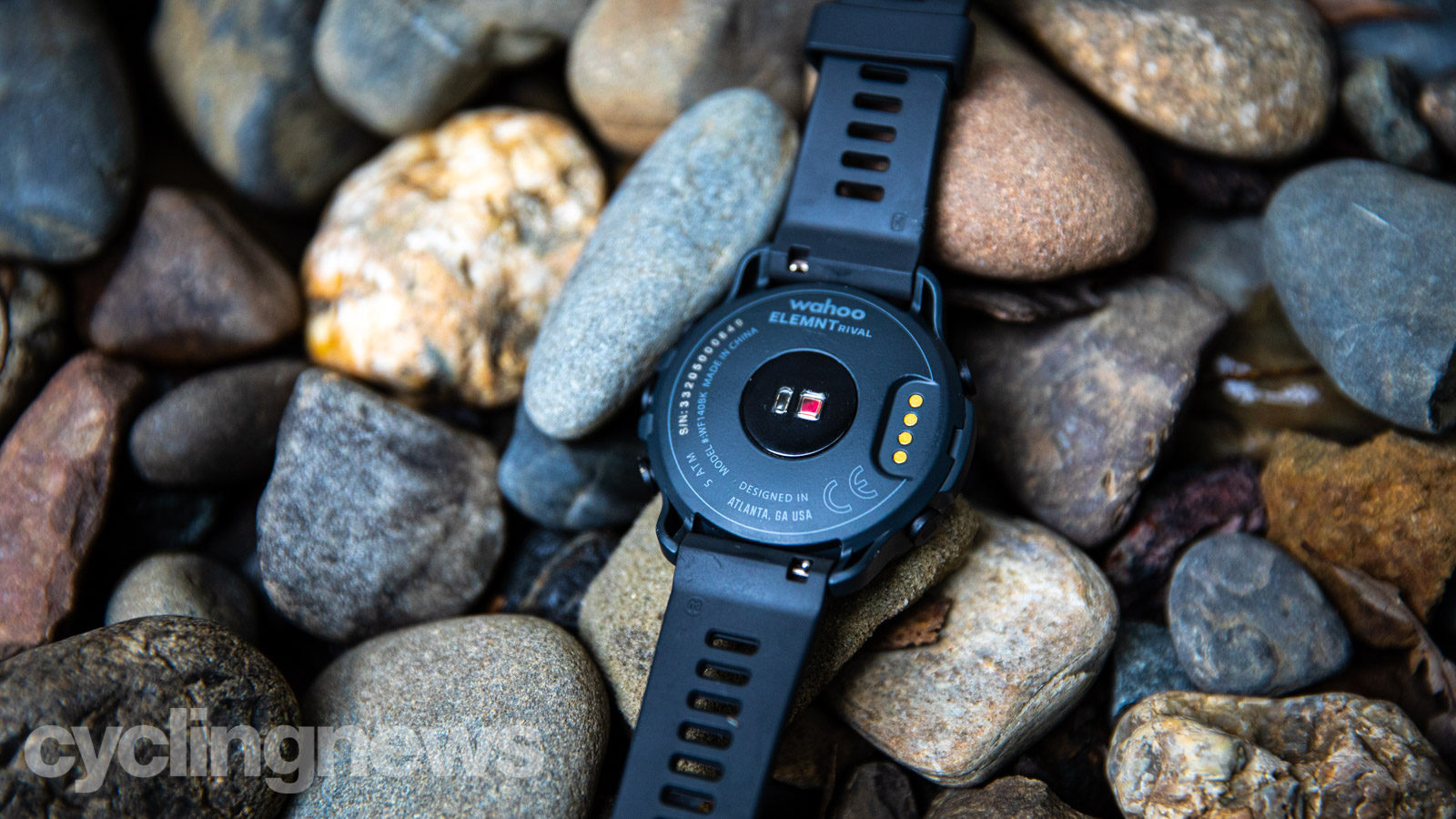
As explained in our wrist vs chest strap heart rate monitor article, optical HR sensors are great at reading your pulse when you're not moving around, which is why they are utilised in medical settings. However, when an optical HR sensor is strapped to your wrist on the back of a watch and is being shaken around as you ride your bike, sometimes the precision can suffer.
Each optical sensor is a little different and can be affected by everything from how it's worn to how many freckles you have, and there are some that are distinctly better than others. The Wahoo sensor consists of dual Green LEDs, and to test its accuracy, I have worn the Rival and a Polar H10 chest strap (paired to a Garmin Edge 1030 Plus) on every ride over my six-week test period. I've picked three rides at random and overlaid the HR data onto a single graph to see how it tracks.
Of course, this is far from a scientific evaluation; however, I've done my best to eliminate as many variables as possible and have followed Wahoo's best practice for how the watch should be worn for best accuracy
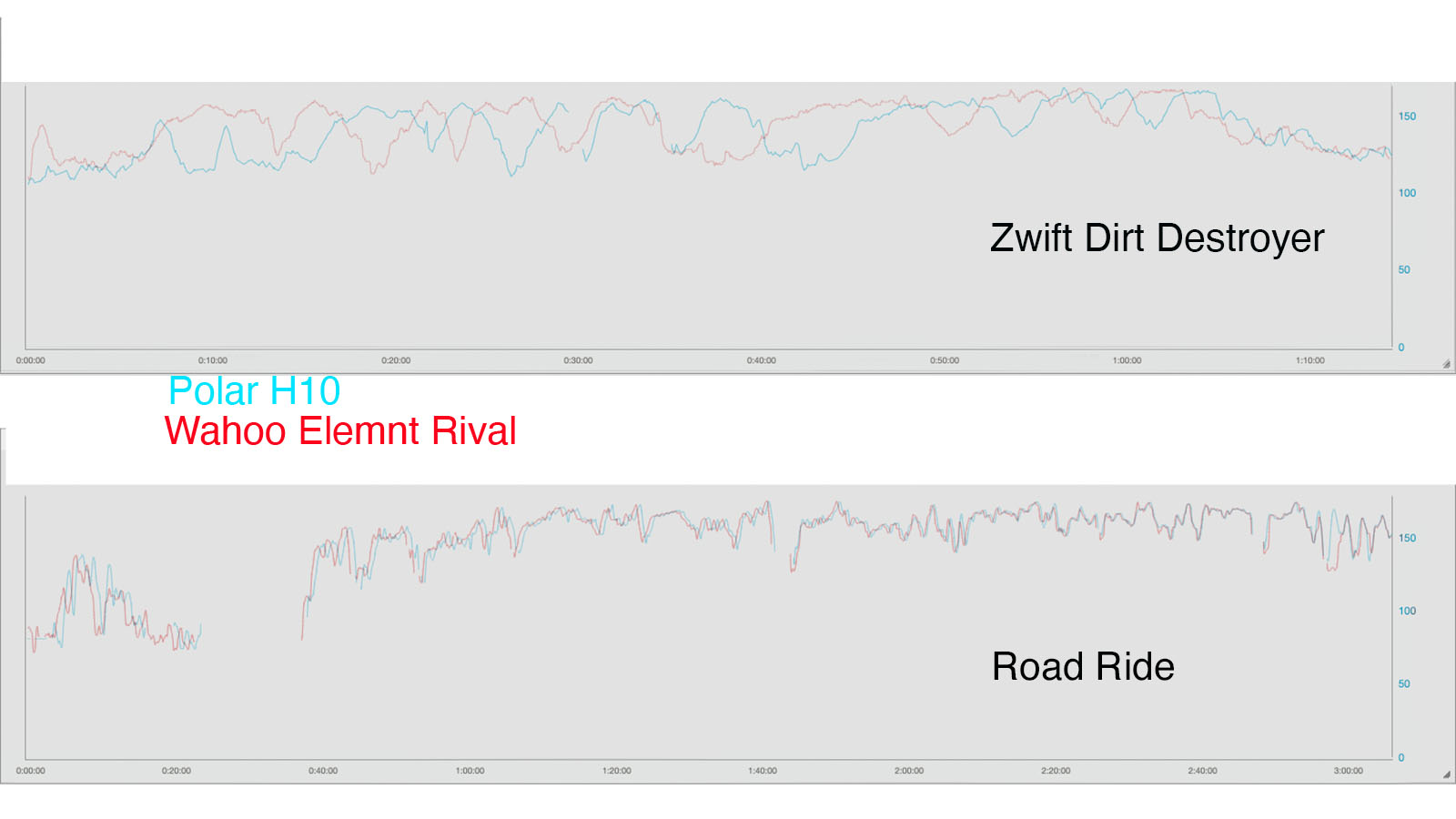
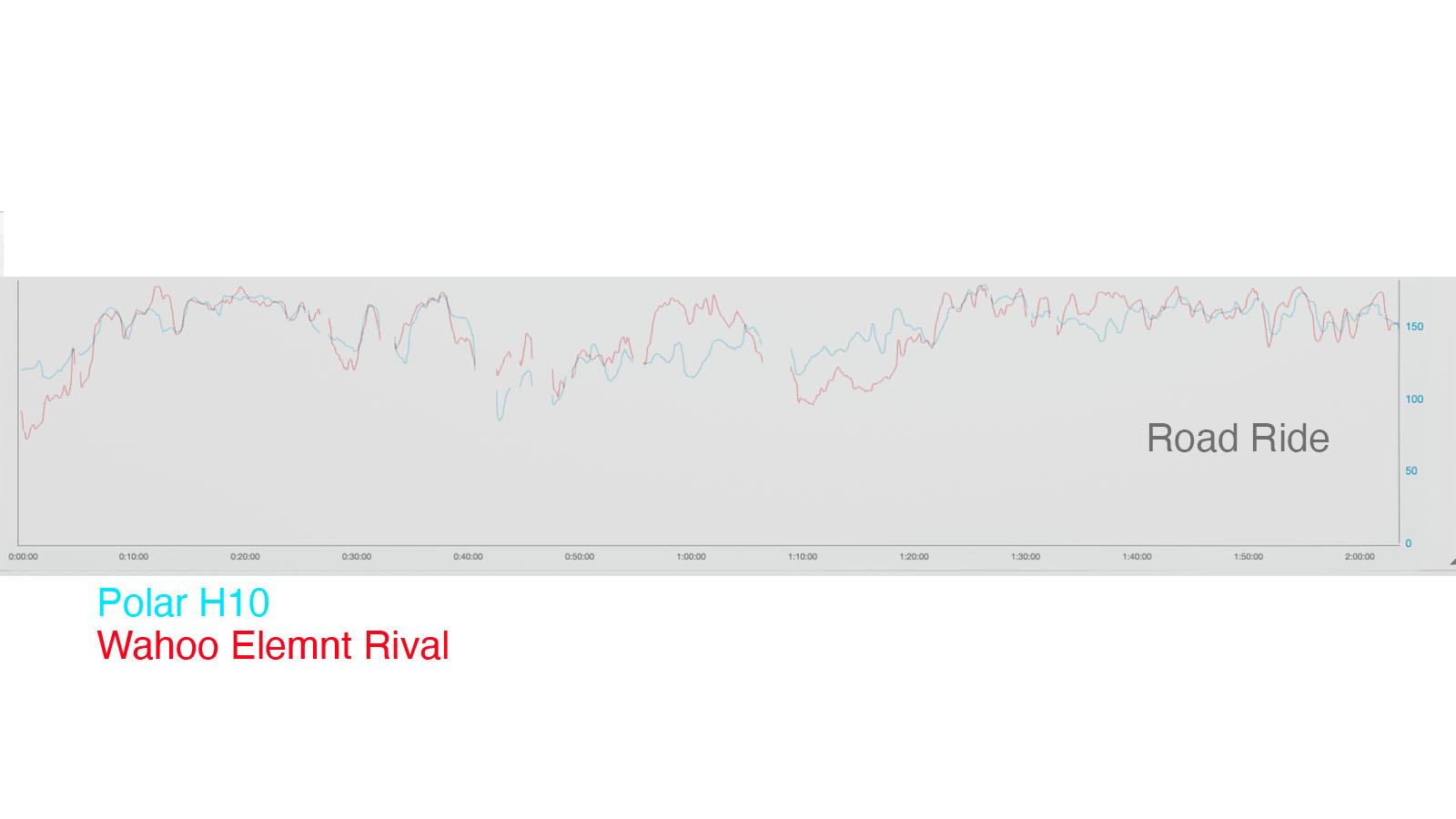
The rides that I drew of the digital hat were a Zwift workout and two road rides.
When it comes to the Zwift ride, I was doing a workout on the Dirt Destroyer training plan, and I have absolutely no idea what happened with the Rival. From the start, it struggled to find a lock on my pulse, and while it gets closer at the end, it's still singing to its own tune — or pulse rather.
However, the Road Ride is the complete opposite, that the Rival and the chest strap are almost mirror images of one another. Of note, that big data gap is not a dropout, but in fact, an auto-pause as I was waiting for someone who was very late to meet for a ride.
The third activity was another road ride, and this one is a bit more of a mixed bag. For part of the ride, the Rival tracks almost in lockstep and other areas where it's off somewhere in the weeds.
Three rides aren't enough to confirm or deny the accuracy of an optical HR sensor, but we only have so much space, and this trend is consistent throughout most of the other rides I've had a look at through my testing period.
Bar the Zwift ride at the top, the average heart rate for all of the files I looked at was dead on, and the min and max heart rates were within two BPM. It's well established that optical HR sensors struggle with a point-to-point accuracy, but based on the data here, it seems the Rival does identify the overall trends.
Luckily for the Rival, it can also pair to a chest strap.
Ride experiences
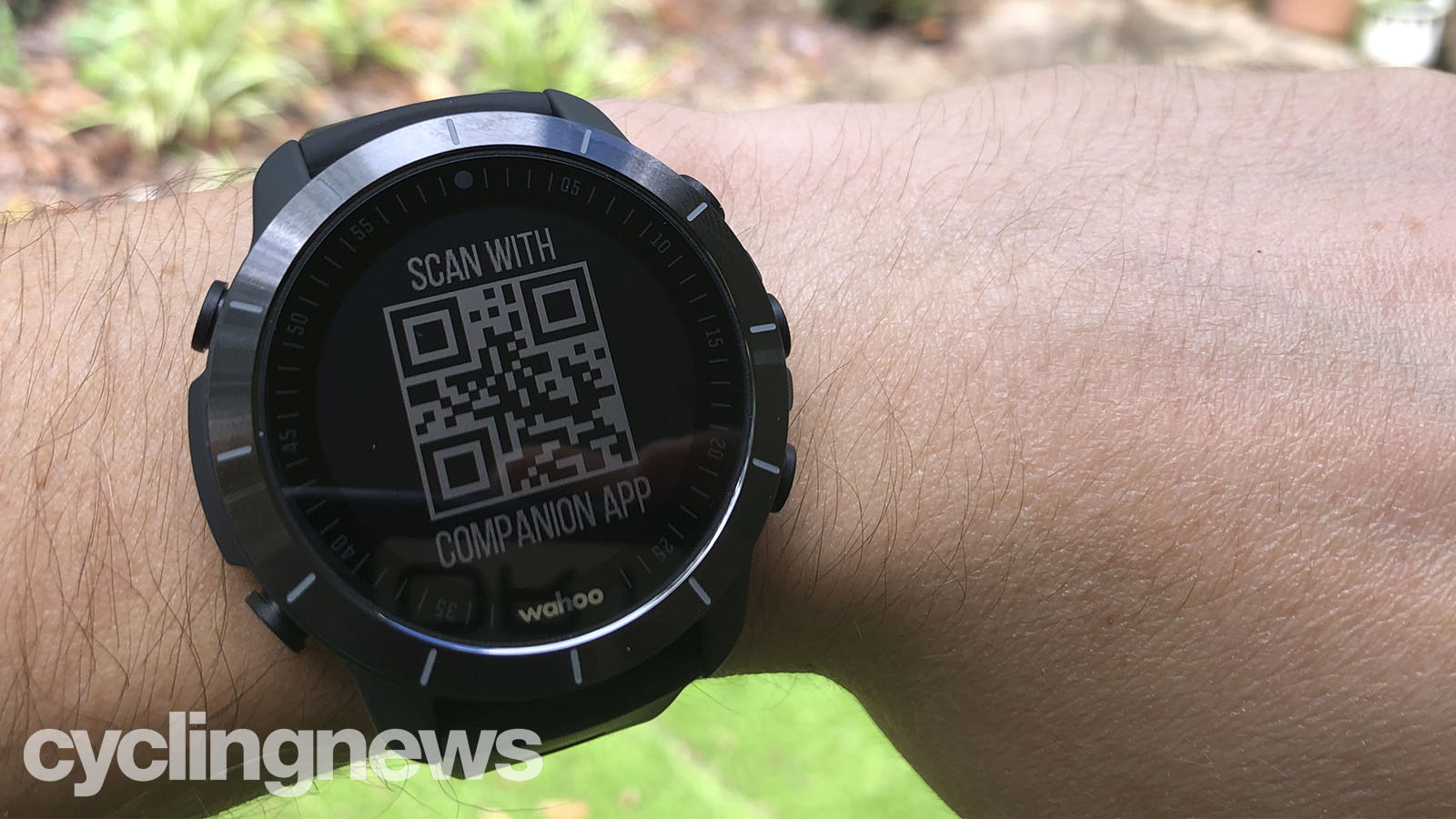
The Wahoo Elemnt rival will feel familiar to anyone who has used a Wahoo computer. The vast majority of the setup is done through the Elemnt, where you can customise the watch face, 24/7 data tracking, workout profiles, pairing sensors, and so much more. There are also tutorials in the app that show you how to take full advantage of every feature the Rival has to offer.
With touchless transition being the headline feature of the Elemnt Rival, it's a watch pitched towards multi-sport athletes. While I am not much of a triathlete, I did my own mini-multisport challenge for the sake of testing — though I went surfing instead of swimming. I've also found surfing is the best way to test the waterproof claims made about a watch; the Wahoo made it out unscathed, something more than one model of Garmin and Suunto watches (that claimed to be waterproof down to 100m) cannot say.
The touchless transitions worked precisely as advertised and picked up each without me having to do anything. What's quite cool is if you have a Wahoo head unit, when the computer picks up the Bluetooth, it will mirror the watch, so your data is visible on your handlebars. When you upload, the Wahoo app will show your transition times and spits for each leg, and should it be a little bit off a timing chip at a race, you can edit them in the app.
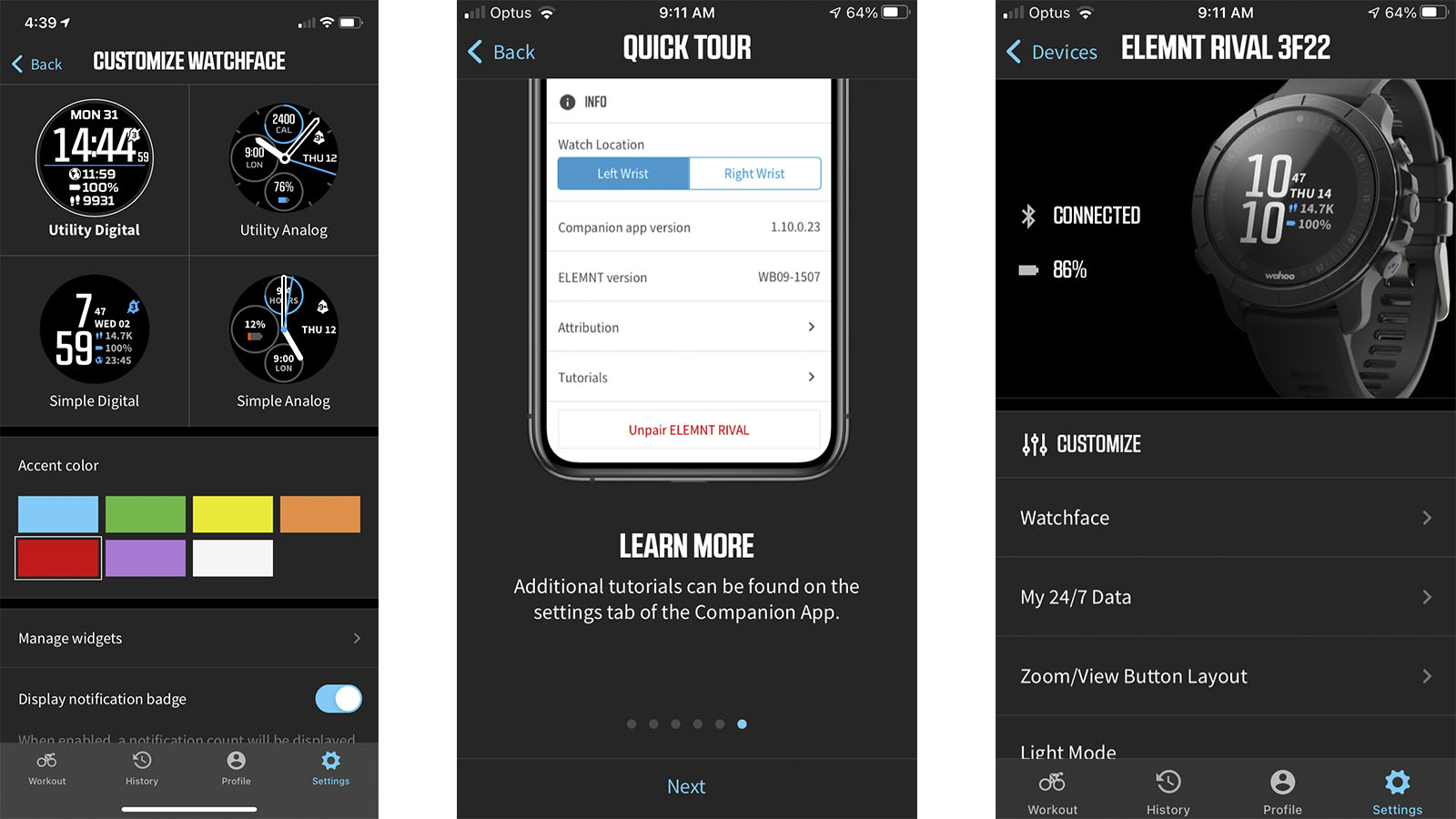
Wahoo has carried over its zoom feature from the computers, so you can change the number of data fields on the screen without having to pull out your phone or dive into a labyrinth of menus. Again, this is ideal for the multisport athlete, who likely doesn't need to see a blank power field during the run portion of their workout or race. It's also ideal if you have multiple bikes, so there isn't a dead field if a sensor isn't installed on one of your bikes.
With a colour non-touchscreen, the Rival is tack sharp and easy to read even in direct sunlight. Wahoo has equipped the watch with an ambient light sensor, so if the sun disappears before the end of your ride, you can still see your power at a glance without having to hit any buttons. There is also a screen lock, which prevents accidentally pausing your ride when taking off a layer.
Speaking of the screen, however, even though Gorilla Glass is impact resistant, it doesn't seem to be all that scratch-resistant. Over my test period and everyday wear, it picked up a few surface scratches, and it might be worth investing in a screen protector.
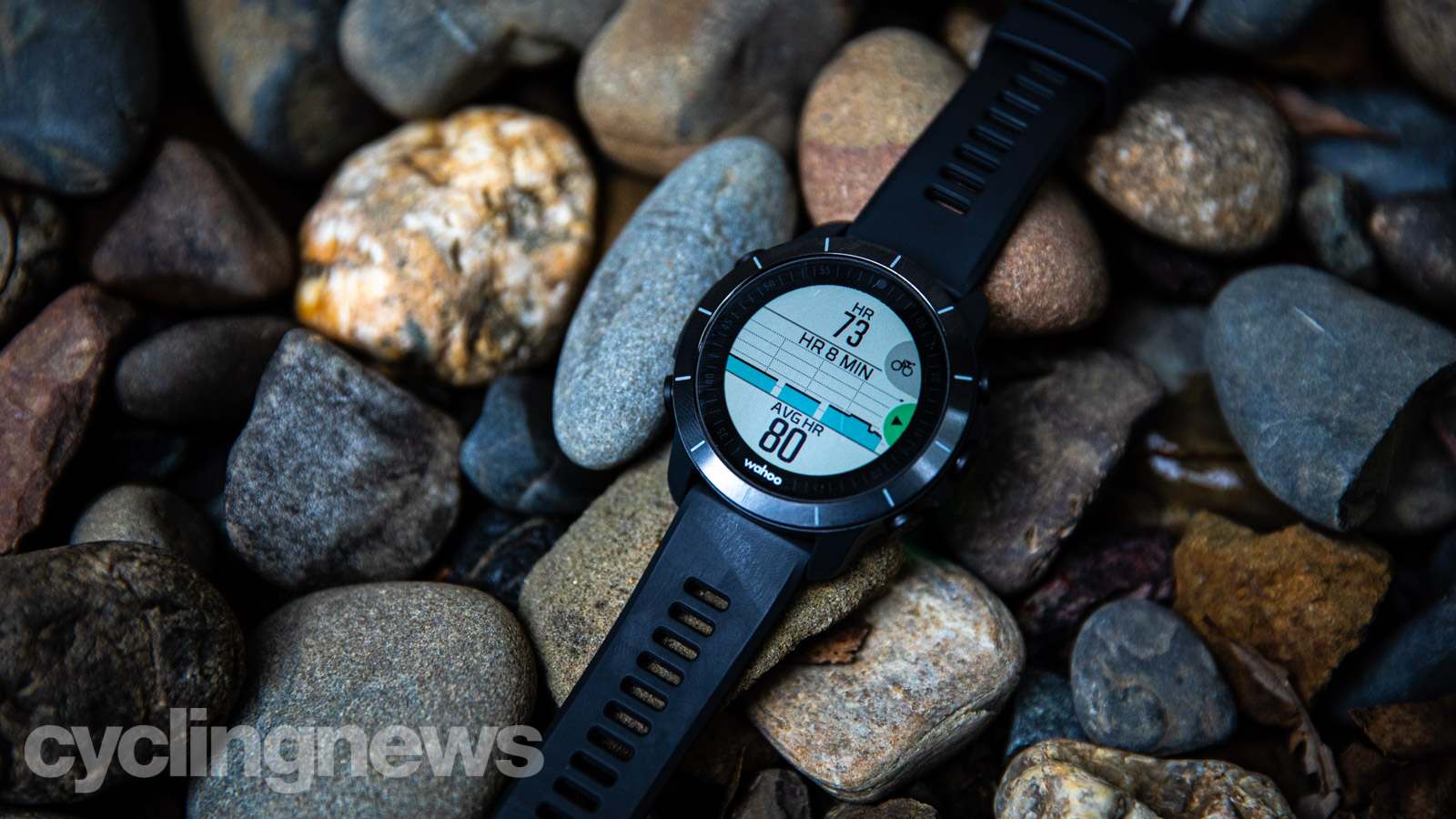
With a claimed 24-hours of battery life in GPS mode and 14-days in watch mode, the Rival is a veritable energizer bunny. While I didn't complete any 24-hour XCM races during my test period, the life I was getting between charges with a power meter paired seems to be about on point.
The GPS picks up signal faster than my Garmin Fenix, Edge 1030 Plus, but the Elemnt Bolt was a bit quicker. As far as GPS accuracy goes, my rides were all within .01 of a mile compared to the dedicated head units used as baselines.
Verdict
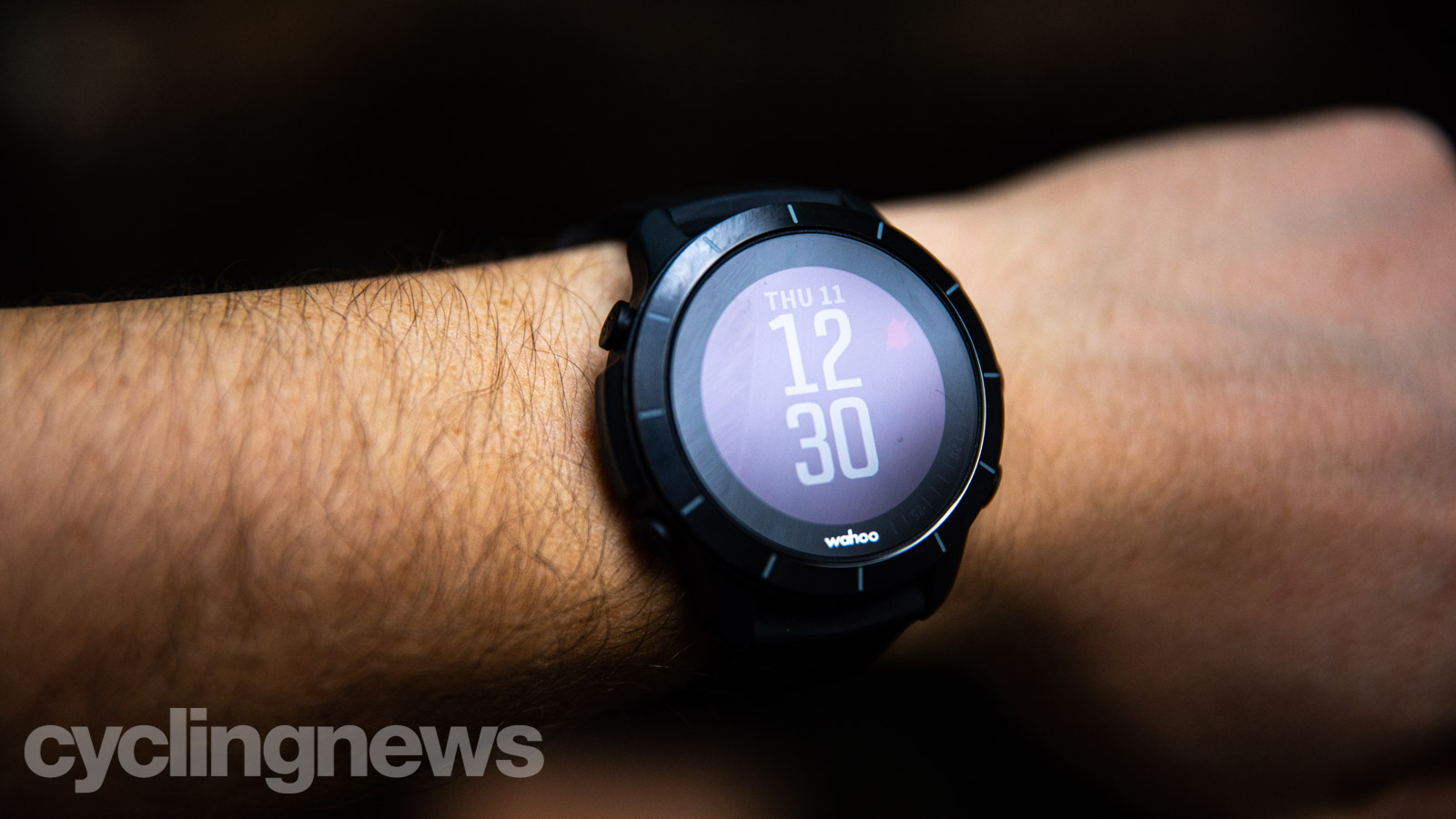
As far as a sport or smartwatch goes, the Wahoo has got rid of all the extra fluff and only offers the features you need from a smartwatch for cycling. There is no contactless payment, Spotify, navigation or similar features, and whether or not this is make or break will depend on the person. The Garmin smartwatch that I wear every day has all of these features and many more, and I have used precisely none of them.
It does miss out on a few things like Strava Live segments, Varia, and ANGi integration, and there is no alarm to wake you up in the morning. To be honest, the first three are things the vast majority of folks who are looking for a smartwatch for cycling can probably live without, but an alarm clock would be nice to have.
That being said, Wahoo is well known for its fast and furious firmware updates, and I would not be surprised if these features and more were to pop up in subsequent updates. Wahoo also blows everyone else out of the water for its app integration and ease of setup. The connections work every time; you never have to re-pair anything or reconnect services — there are no headaches and everything functions as it should.
When it comes to heart rate, the Rival is inconsistent at best. To be fair, most other optical HR sensors, whether they be on the backs of watches or are stand-alone units, are much the same, so if the integrated HR sensor is your make or break feature, the Rival might not be for you, as there are sensors that perform better. Lucky for you; it will pair to the chest strap you probably already own.
There is no other watch for the multi-sport athlete that has such a seamless transition tracking feature. When you are brain dead and trying to figure out how to tie your shoes again, it's pretty darn easy to forget the lap button. With touchless transitions, the watch takes care of it for you.
For those who aren't sandwiching their bike rides between a swim and a run, the Elemnt Rival is unobtrusive, reliable, and good looking, and it will tell you the time. Priced at $379.99 / €379.99 / £349.99 / AU$599.99, it is expensive and lacks some of the 'smart features' of a similarly priced Garmin Forerunner 245, but the Rival supports power meters and can control your smart trainer.
Tech Specs: Wahoo Elemnt Rival smartwatch
- Price: £349.99 / $379.99 / €379.99 / AU$599.99
- Display: 1.2 in (30.4 mm) colour display with 240x240 pixels resolution
- Weight: 53g
- Water-resistant: 5 ATM (water-resistant up to 50 meters)
- Connectivity: ANT+, Bluetooth, and ANT+ FE-C
- Sensors: GPS and GLONASS
- Battery: Smartwatch Mode: 14 days, GPS or HR Mode: Up to 24 hours
- Dimensions: 46.5 x 46.5 x 15.3 mm
- Strap length: 10 in (25.4 cm), fits wrist circumference 140 mm - 240 mm
Based on the Gold Coast of Australia, Colin has written tech content for cycling publication for a decade. With hundreds of buyer's guides, reviews and how-tos published in Bike Radar, Cyclingnews, Bike Perfect and Cycling Weekly, as well as in numerous publications dedicated to his other passion, skiing.
Colin was a key contributor to Cyclingnews between 2019 and 2021, during which time he helped build the site's tech coverage from the ground up. Nowadays he works full-time as the news and content editor of Flow MTB magazine.
